The Expedition
In 1803, after the Louisiana Purchase, President Thomas Jefferson emphasized that the North-American government was interested in expanding its territory to the Pacific Ocean Coast. Thereafter, he got the support and funds he needed to order an expedition and cross the continent, coast to coast.
On June 20th, 1803, the President recruited Captain Meriwether Lewis to lead this expedition, who, in turn, recruited his second lieutenant, William Clark, to go with him. Overall, over 30 explorers were recruited and trained for this task.

The expedition itself started on August 31st, 1803 at 11 A.M. on the dot. Together, they collected 3 years of data in their journals. Obviously, there were some losses, as they found both peaceful and hostile communities, and there was tension, but they carried on with the task at hand.
This expedition bore fruit on September 23rd, 1806, as their journals were filled to the brim with precious information about the North-American territory and the native communities that lived there, as well as its rivers and mountains, plants and animals. It was a pivotal journey that helped map the entire American continent in detail.
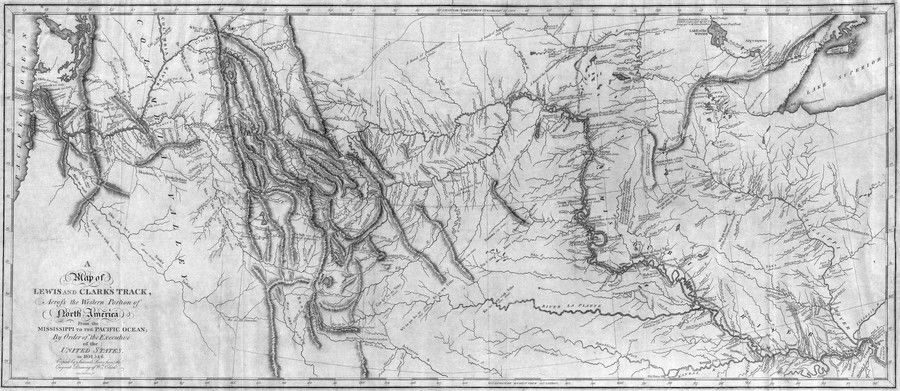
Now, it's our turn! Let's play the part of these explorers and make our own discoveries with Discoveries: The Journals of Lewis & Clark!
Game Info
Discoveries: The Journals of Lewis & Clark is a board game best played with 2 to 4 players, for ages 14 and up, by designer Cédrick Chaboussit. It was illustrated by Vincent Dutrait.
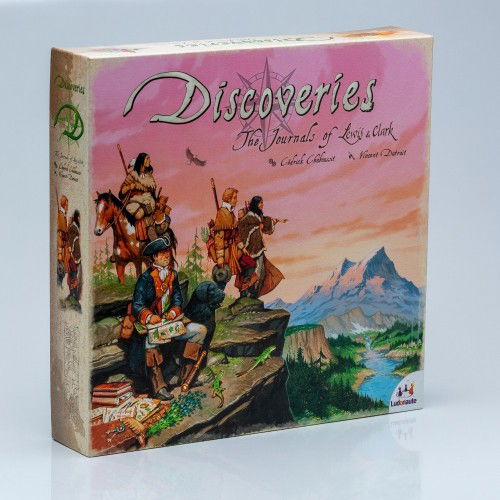
Discoveries: The Journals of Lewis & Clark was released in 2015 by Ludonaute. Its basic mechanics are: dice rolling, dice placement, collecting sets, and deck building.
For me, the best thing about this game is that, besides being an excellent game that features all the mechanics I enjoy the most, you can play it regardless of what language you speak.
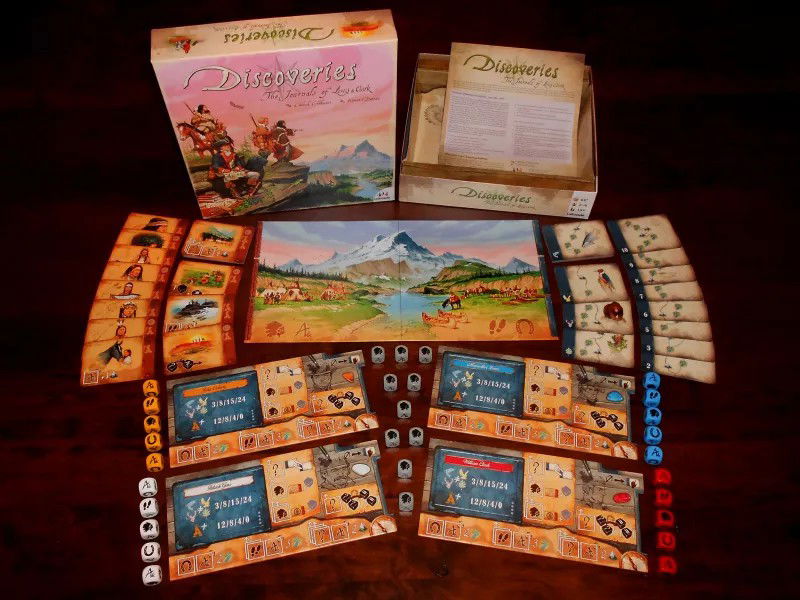
In 2015, the year it was released, it was nominated to the Best Strategy Euro Game category by the Board Game Quest Awards, and was also nominated to Golden Geek's Best Artwork category.
Let's dive right in!
The Game
It's 1803, and we were just told, by the President, that we will be part of a great expedition to uncover the North-American continent from coast to coast. We must collect data about its geography, biology, and ethnology, and note all of it down in our personal journals.
Heading our expedition is Captain Meriwether Lewis and second lieutenant William Clark, as well as Sergeant John Ordway and Soldier Patrick Gass. These are the 4 main characters you can pick to play. We also have the help of over 30 explorers, represented by our dice, which assist all players.
At the center of the board, you'll find the camp (the main game area), then, on the left, there's the meeting area. The center itself is a place for players to rest. On the right, you'll find the reconnaissance area. Please note:
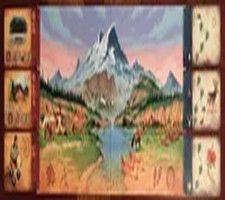
Each player, after picking their character, already gets 5 members from the expedition faithful to them (represented by same-color dice). The other dice colors represent other players and their faithful members. These followers may even work for you, but they can turn on you at any point. There are also neutral explorers, which work for any player (gray dice, or neutral dice).
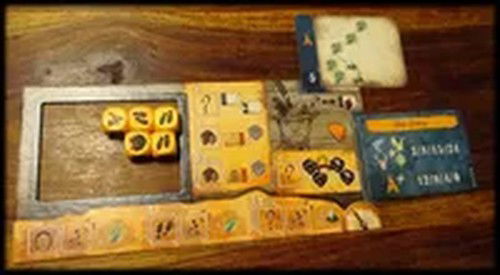
Each player gets their own individual board with an area for their expedition members (your dice). On this board, you will already have a vast variety of actions available, but you'll obviously get even more actions once you learn from the native communities.
Among these actions, you can send off explorers (dice) to make discoveries by walking or riding, negotiate with the native communities, or just pause to note down everything you collected in your journal. Oh, and, obviously, as this game uses dice, there's a way to mitigate your RNG in your individual board.
After you take one of these actions, you basically have two choices:
That's the core gameplay!
Placing dice on your individual board means you're preparing yourself to either ride, climb, or explore a mountain. You can also, maybe, contact a friendly native community, or even a hostile one. If you need to, you can change your plans, or change your luck (the dice RNG), so please pay attention because this is a critical step in the game! Invest some time in it!

Picking up your dice is also an important strategy, as that's how you'll rest. You can call back your explorers (your own colored dice) to rest regardless of where they are, and, believe me, your opponents can "call" them as well. So, this action is great to sabotage other players.
You can also "recruit" any explorers that are "idle" in the camp. They'll go with you, but they remain faithful to their leader, and return if they call them back.

With these actions, you'll note down all your discoveries in your journal, and that's what will give you points at the end of the expedition. It is truly quite simple, but also highly strategic.
This is, basically, a player turn in Discoveries: The Journals of Lewis & Clark!
End of the Match
The game ends when a player cannot refill his Exploration zone after successfully exploring a Discoveries card (because the deck is empty). All other players (except the one that triggered the end of the match) play one last turn.
This is how you'll calculate your final score:
The player with most points wins. If there is a tie, the tied player with most dice (explorers) in their individual board (regardless of where they are) wins. If there is still a tie, players share the victory.
It is that simple!
Strategy Tips
In Discoveries, you must calculate everything to the last detail - where you'll put your dice, when, what time you should call back your faithful explorers, so on and so forth. So, here's a broad tip: "keep your eyes wide open".
Even though you only have two options on your turn (putting dice down or picking it up), this is actually a lot. Putting down dice at the wrong time might lose you a lot of time, or even lose you some explorers. That will happen when you don't have enough dice to explore, and your remaining dice will just stay there, idle, waiting until you can get more dice (more explorers) to do something.
Not to mention that some actions force you to keep some dice on the board and send others to the camp, so they're available for anyone to call back, either you or your opponents. It is an incredibly tough decision. So, notice how calculating exactly how many explorers (dice) you need to play a certain action is critical: you need to consider everything to set up the best turn possible.
And, there's more. You have to use more than just your dice, and that's why Discoveries stands out! At the beginning of your turn, you must state which face of the dice you'll use out of all 4 available (walking, riding, writing in your journal, or contacting Native American communities). You may use all the dice with this face, but only the ones you pick out. That's genius! It brought the game's strategy to another level!
You can get new explorers (neutral/gray explorer dice) when you contact Native communities, but keep in mind that contacting these communities will bring you a lot more than just new explorers. For instance, you can get new, better actions for your board, and more knowledge about these communities (Teepees, which give you points). So, contact them, even if you can only contact hostile communities, which obviously is a lot more work (I thought this was fantastic!).
Collecting data can be, sometimes, crucial, and it will be the difference between losing and winning. If your opponents have your explorers, and you see they're about to make a new discovery, it's time to call them back. This will sabotage all your opponent's plans! Keep an eye on your faithful explorers, and don't let too many of them roam free.
The other way around also applies: use other players' explorers for fast, easier actions to make sure they can't disrupt your game plans. You'll have fewer problems this way, as you'll use them just long enough before your opponents call them back.
Now, here's a crucial tip: when you set up to explore again, take a look at your Exploration card and the other cards available on the main board. If you can do yours and another one from the main board, besides scoring more points, you'll get to play an extra turn for free.
Use your dice wisely!
Follow these tips and return to the President with the best journal you can write, with all your greatest discoveries!
Unboxing, Rules, and Gameplay Videos
Check out this unboxing:
Learn the rules:
Watch some gameplay:
Teaching Moments
If you want to teach someone, or yourself, how to best manage their resources, Discoveries is definitely the best choice! Without a question!
With this game, you'll have to manage your explorers, a limited number of them, acquire new temporary explorers (gray/neutral), and use other players' explorers, for an indefinite amount of time. You'll have to learn how to do all of this as efficiently as you can, as everything may change in just a second.
Actually, the only ones you can rely on are your own faithful explorers. The other ones, the gray ones, you can "somewhat" control, as they only set out when you use them. However, sometimes, if you're not that lucky, you'll have so many of them you can even lend them to other players, but that's rare.
So please keep in mind that managing your faithful explorers is hard work. The others are less difficult, but you'll have to manage your resources even more when you use your opponents' explorers. If your opponents decide to call them back, they will leave.
This is a lesson on how to manage our resources efficiently, as strategically as we can. Otherwise, we'll be "drifting away" throughout the entire game and get nowhere.
I highly recommend you take some breaks during the game to explore these concepts a bit better if other players are struggling with it, or if you just want to take some time to teach them to someone else. Using other players' explorers, for instance, is a decent strategy, but you must know how to use them - namely, in fast actions that don't take too long, as these explorers can abandon you at any point.
"Discoveries" will teach you how to manage the resources you have, what the "market" can offer you, and how to spot an opportunity. It is a great lesson in business, so use it wisely!
I highly recommend Discoveries: The Journals of Lewis & Clark to your collection!!









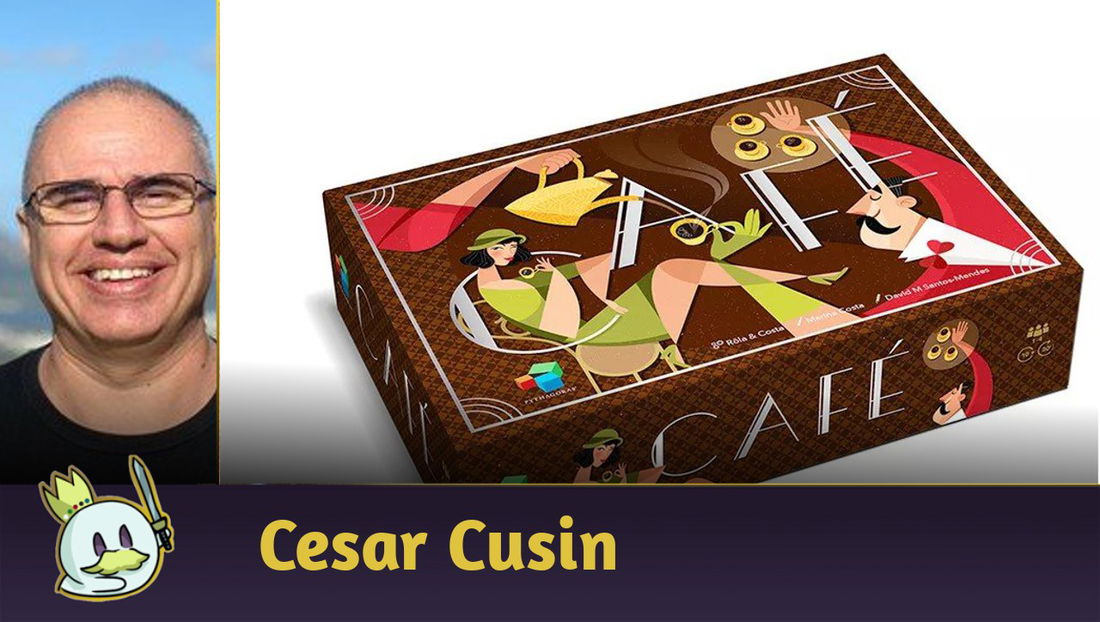
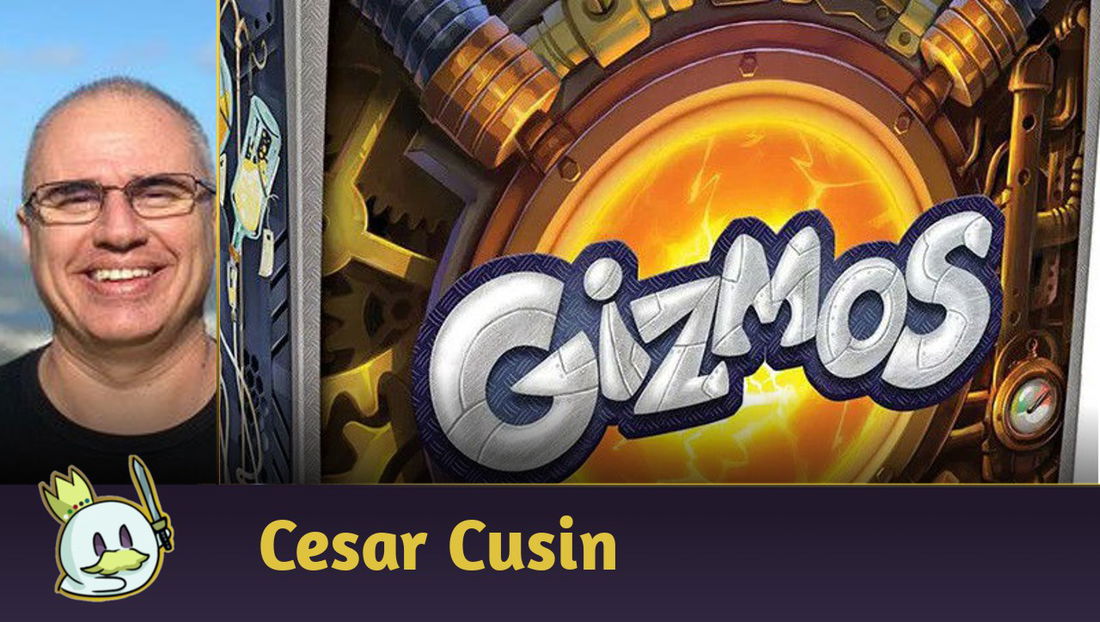



— 评论 0
, 反应 1
成为第一个发表评论的人